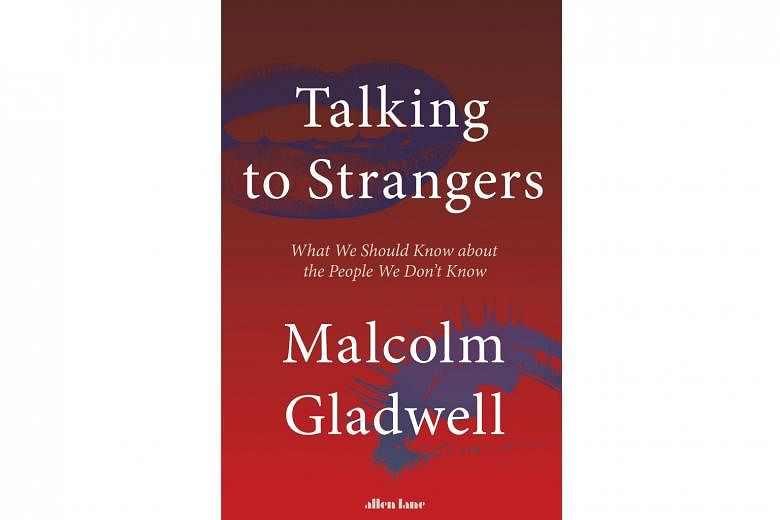NON-FICTION
TALKING TO STRANGERS
By Malcolm Gladwell
Penguin Books/Paperback/379 pages/$28.89/ Books Kinokuniya/4 stars
What does a former prime minister's assessment of Adolf Hitler have in common with the wrongful conviction of American student Amanda Knox in 2009 for the murder of her roommate?
Both demonstrate issues in the ways people come to form their judgments of strangers, says New Yorker staff writer Malcolm Gladwell in his latest book, in which he picks apart this topic using 12 high-profile case studies.
Take the example of how former British prime minister Neville Chamberlain - the only Allied leader during the World War II period to have spent significant time with Hitler - came out of negotiations believing the German leader's ambitions were limited to Czechoslovakia.
Several others who met Hitler shared similar views, although those who had not, such as Chamberlain's successor Winston Churchill, never believed for a moment Hitler was anything more than a "duplicitous thug". Hitler eventually started World War II in Europe.
"The puzzle is that the group who were deceived are the ones you'd expect not to be," says Gladwell.
It is his sixth book looking into human behaviour and Gladwell, who wrote the 2005 bestseller Blink: The Power Of Thinking Without Thinking, again attempts to present a complex topic in a way that is engaging and easy to digest.
This works well in the latest volume, in which Gladwell talks about two puzzles: Why people fail to tell when strangers are lying and how seeing someone face to face does not necessarily help.
He goes on to explore the ideas of psychologist Tim Levine, arguing that wrong judgments are made because people "default to truth" - meaning they work to square the evidence they find, with an assumption that the other party is not lying.
On the flip side, people are bad at identifying when others are telling the truth. They assume transparency in behaviour, meaning the way a person appears on the outside should provide a reliable window into how he feels inside, he adds.
He gets a psychologist to map the facial actions of characters on the popular sitcom Friends to show how their expressions match the feelings they are supposed to express - before pointing out that not everyone exhibits such transparency in real life.
In the case of Knox, who was found guilty of killing her roommate despite feeble evidence, many believed she was guilty because her behaviour did not match conventional expectations of how a grieving friend might behave. Her conviction was later overturned.
While these examples illustrate Gladwell's points about how people perceive strangers, his use of such diverse, complex case studies also risk oversimplification.
The 2015 Stanford rape case, for example, was painted as a scenario in which a man and woman "meet at a party, then tragically misunderstand each other's intentions" - which appears to downplay the acts of freshman Brock Turner, who had sexually assaulted an unconscious woman outside a fraternity house.
His controversial six-month sentence, which many deemed too light, was also not discussed.
But even as these discussions sometimes leave more to be desired, Gladwell has nonetheless provided a fresh take on the age-old question of how to decide whether to trust someone in this thought-provoking volume.
If you like this, read: Outliers: The Story Of Success by Malcolm Gladwell (Penguin Books, 2009, $17.07, Books Kinokuniya), which examines what makes an extreme overachiever.



